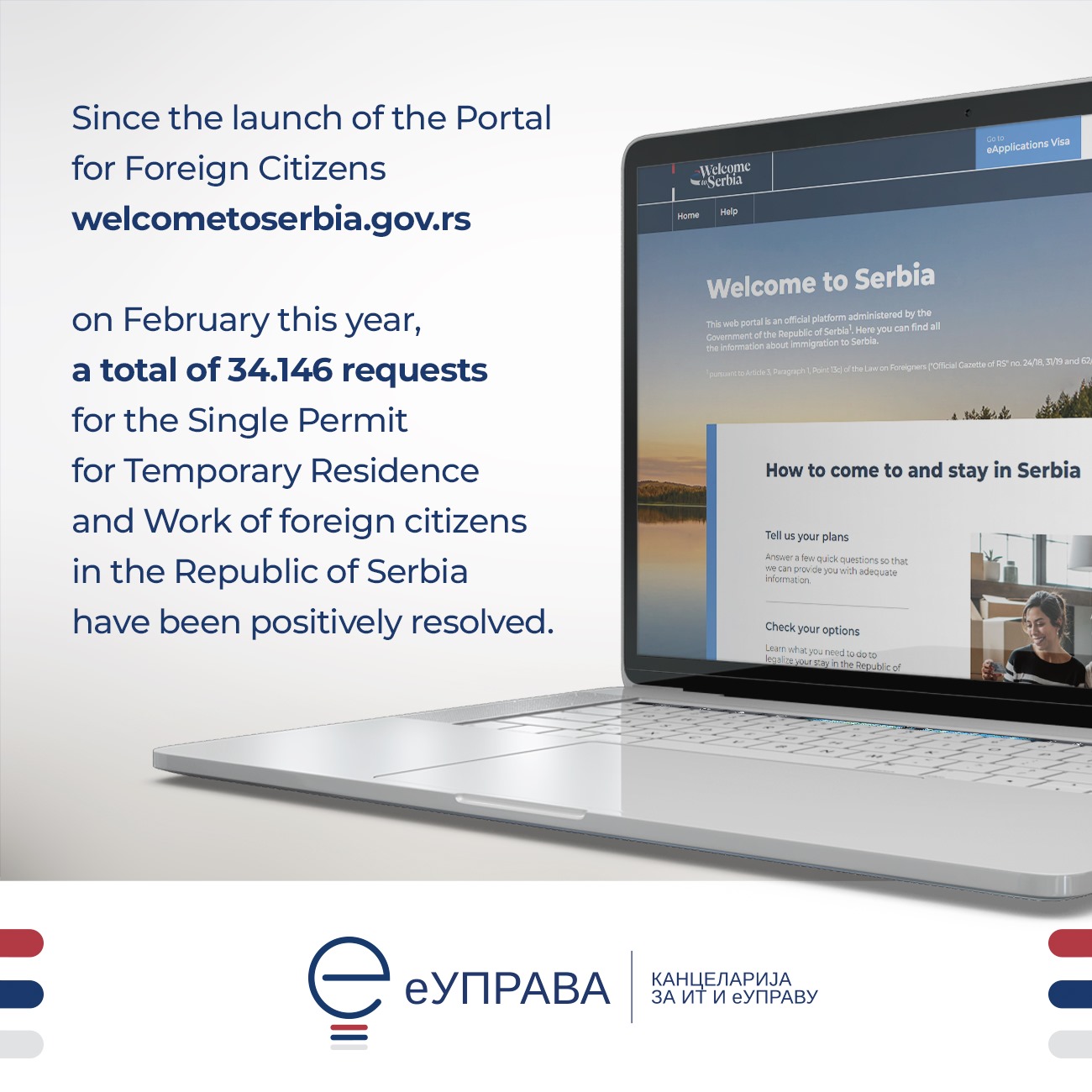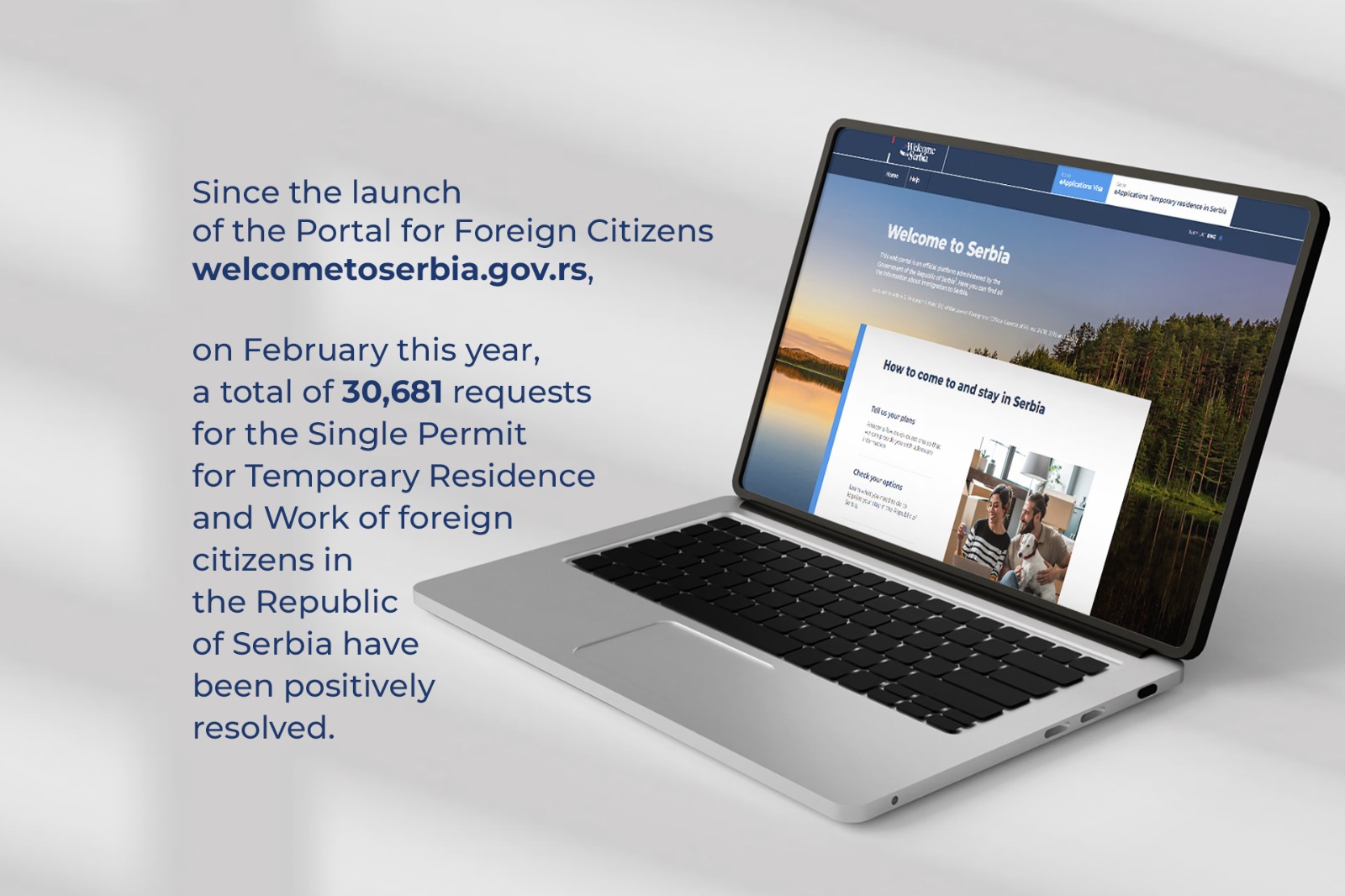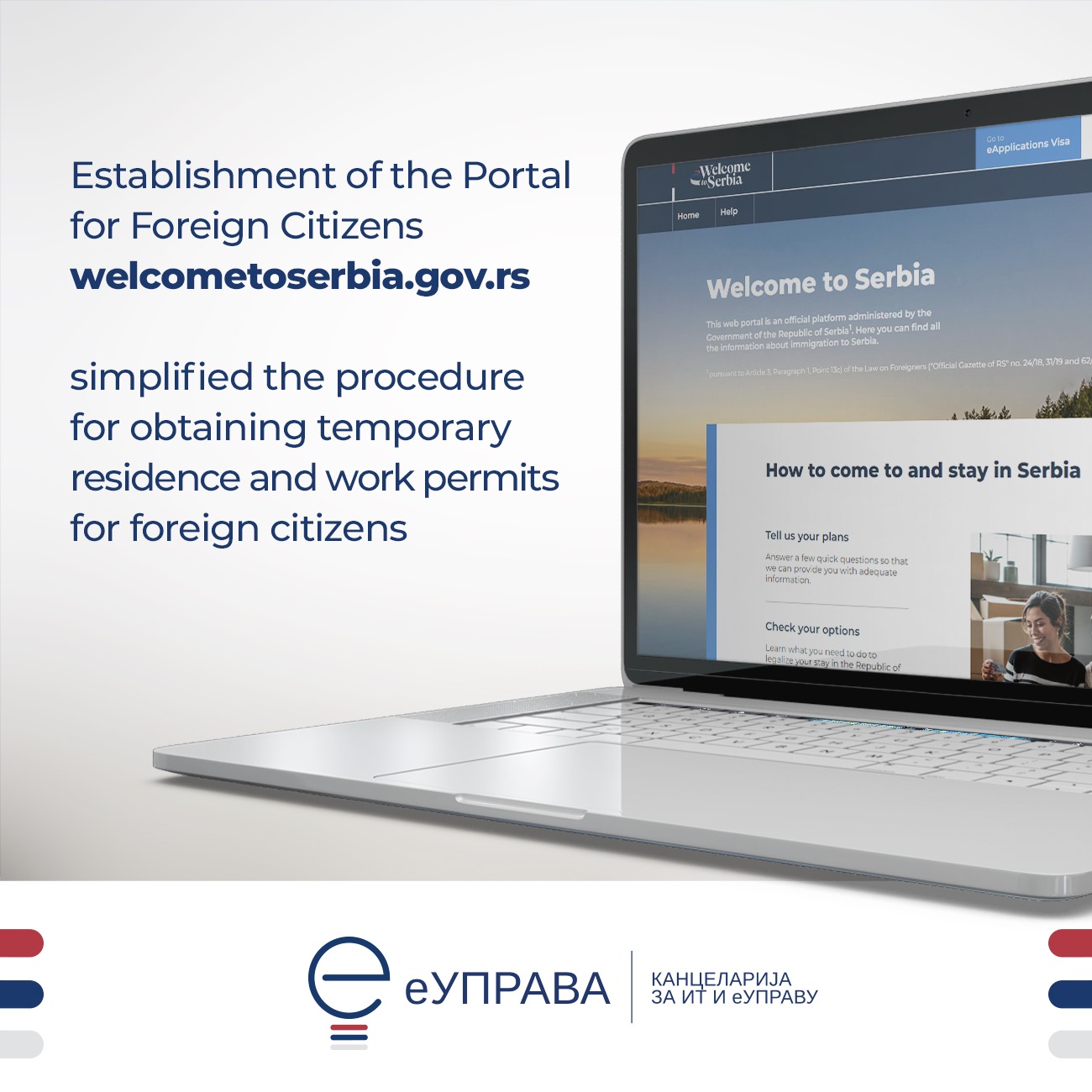New electronic service - eConsulate was presented today in the Office for IT and eGovernment, in the presence of the Minister of Foreign Affairs, Nikola Selaković, and the Director of the Office for IT and eGovernment, Mihailo Jovanović, PhD. From now on, all foreign citizens coming to Serbia with the intention of obtaining employment can apply for a type D visa online, for a longer stay of up to 180 days, through the service available at the following internet address: https://ekonzulat.gov.rs/.
New electronic eConsulate service available to foreign citizens who want to obtain employment in the Republic of Serbia and apply for a type D visa
The introduction of this service significantly facilitates the work of diplomatic and consular missions of the Republic of Serbia on visa matters, especially in those countries where a large number of persons looking for employment in Serbia are coming from.
As soon as a foreign citizen applies for a D visa, they receive the ID number of their application and the employer who intends to hire them can submit a work permit application to the National Employment Service, so that the procedures for issuing a visa and issuing a work permit are conducted in parallel. In that way, the procedure for issuing a work permit is far more efficient.
Once they receive a D visa on the basis of employment, upon arrival in Serbia for the period for which they were granted a D visa (for example 180 days), the foreign citizen does not have to apply for a temporary stay, because a D visa on the basis of employment for those 180 days means having a regulated stay in our country. In that case, the employer who intends to hire the foreign citizen applies only for a work permit. In the event that even after 180 days they remain to work in Serbia, a foreign citizen who has been granted a D visa submits a request for temporary residence.
The users of the eConsulate service will primarily be citizens of Asian countries (China, India, Bangladesh, Pakistan, Nepal), as well as citizens of Turkey, Russia, Ukraine, and Egypt, who come in large numbers to work in Serbia, mainly on large infrastructure projects. When it comes to the structure of persons who apply for this type of visa, it is available to workers of all profiles, who are in short supply in Serbia, while a smaller number of them consist of engineers and other highly educated staff.
The procedure of online application for a type D visa, for a longer stay of up to 180 days, in the first phase will only be on the basis of employment and shall apply to all foreign citizens who come to Serbia with the intention of obtaining employment. In the next phase of application development, we expect that in this way, electronically, it will be possible to apply for other types of visas (based on education, family reunification, real estate ownership, treatment and medical care).
Procedure for obtaining a type D visa
- The user creates an account through eConsulate https://ekonzulat.gov.rs/ on the National Portal for Electronic Identification (gov.rs), whereby becoming an eCitizen and initiates the submission of application by filling out the application form.
- Submitting an application is executed through a wizard in 4 steps:
- Personal data related to the person applying, family data, if any, and employment data are filled in.
- Travel document information.
- Visa data (choose the Digital Cadastral Map to which the user applies - for now it is only possible to apply for a D visa based on the intention to obtain employment), data on previous stays in the RS, if any, data on the intended future residence in the RS (address in the RS).
- Attaching accompanying documentation - in addition to the photograph, passport, invitation letter, the user is obliged to enclose other documents required by the DCM. Also in this last step, the user receives instructions regarding payment of the visa application processing fee, so that the DCM does not take the request into consideration until the payment is recorded - the payment does not go through the system, the users only receive payment instructions in this manner.
- After the application has been submitted by the user and the payment for the submitted application is recorded, the DCM takes over the request in its VIS where it further processes the request and changes the status of the request on which the applicant is notified by e-mail (any change of status initiates sending an e-mail to the user).
- DCM has the possibility to change the status of the request, but also to send a comment to the user, request additional documents and send attachments.
- After the application has been approved, the user must visit the DCM in person, in order for their visa to be entered into their passport.
On the portal itself, the user has access to the Procedures option where all the important information about the visa application process and the necessary documentation expected from the user is available, as well as the Help section where the most frequently asked questions and answers can be found. The Ministry of Foreign Affairs has also provided Customer Support that users can contact via e-mail if they encounter any problems with their user account or have some additional questions regarding the electronic submission of a type D visa application.















